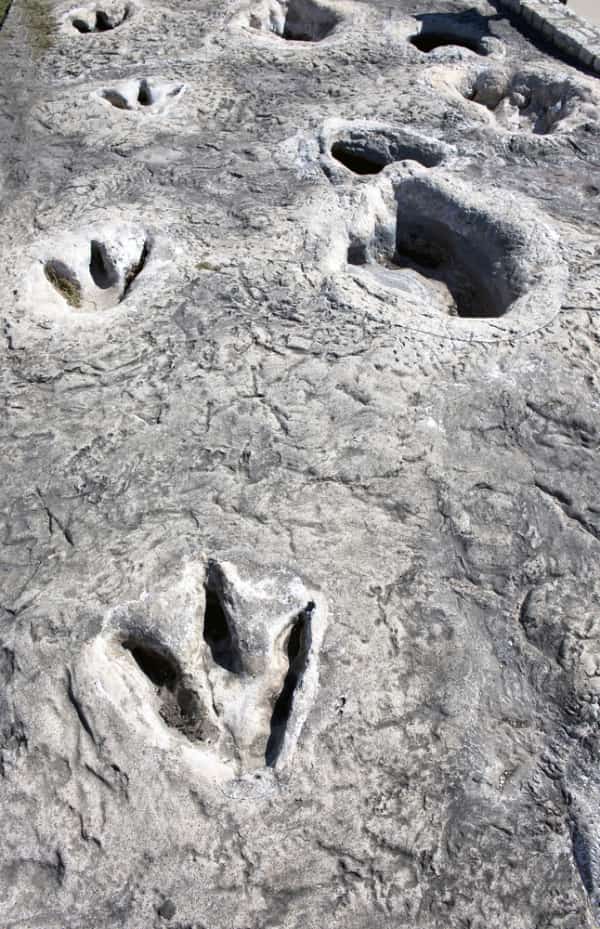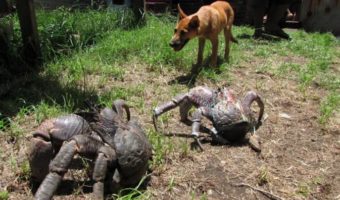113-million-year-old Dinosaur Footprints Discovered in Texas!
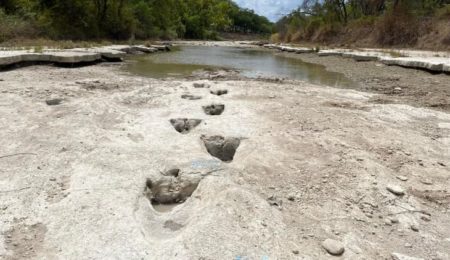
In 2022, around 140 dinosaur footprints were discovered in Texas at the US Dinosaur Valley State Park, which excited the officials. These footprints were estimated to be 113 million years old! This mind-blowing discovery provides new insights into the different aspects of these prehistoric creatures, right from their physical characteristics and adaptations that helped them to move, capture their prey, and survive in the environment where they lived. These details are not preserved in fossil records.
Table of Contents
How were the dinosaur footprints discovered in Texas?
The Dinosaur Valley State Park in Texas is a hilly limestone terrain that sits astride the Paluxy River, a tributary of the Brazos River. During summer, the Paluxy River usually stops flowing, leaving a few isolated pools. It again fills up during the rainy season.

The year 2022 was different, though. A drought in Texas caused the Paluxy River running through central Texas to dry up almost entirely. This led to a remarkable discovery at the Dinosaur Valley State Park that excited the officials.
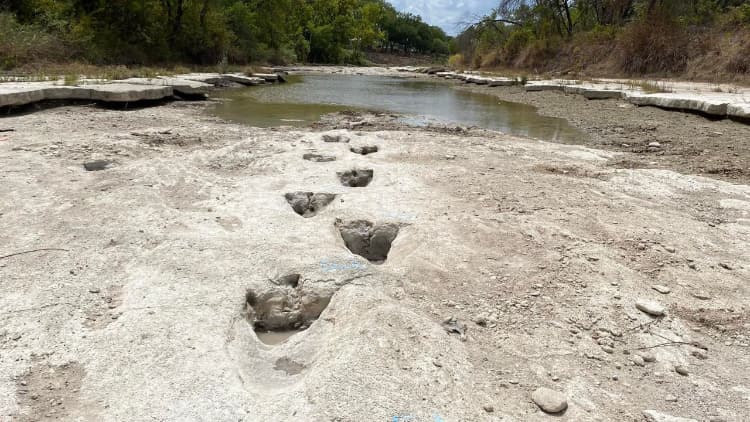
Around 140 footprints of dinosaurs were discovered at different parts of the Paluxy river. These footprints were estimated to be 113 million years old. In fact, this trail is reported to be the longest dinosaur trackway in the world.
Which genera of dinosaurs do these footprints belong to?
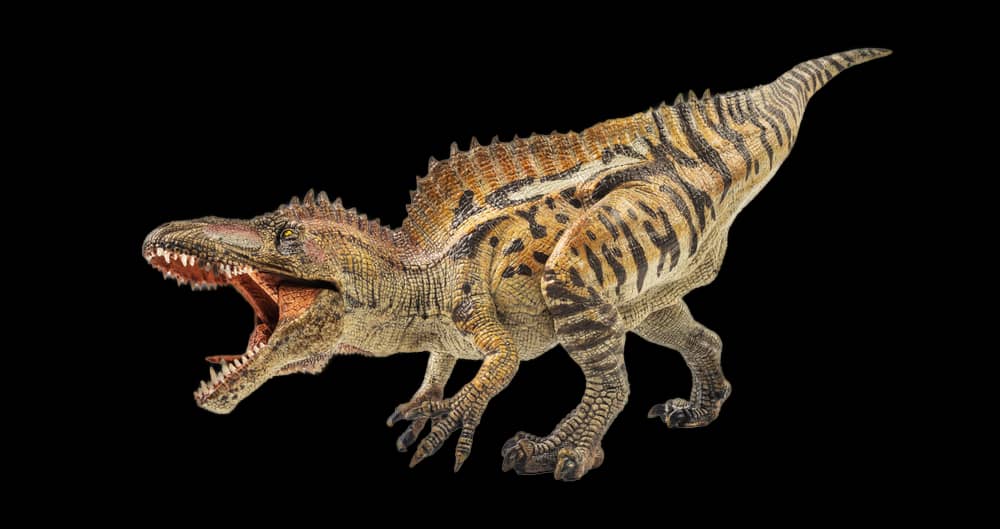
Studies revealed that the dinosaur tracks belonged to the Acrocanthosaurus and Sauroposeidon genera. Acrocanthosaurus was a carnivore (meat-eating dinosaur), while Sauroposeidon was a herbivore (plant-eating dinosaur). Â Experts believe that the Acrocanthosaurus preyed on Sauroposeidon, which explains the footprints of both dinosaurs together. Both dinosaurs had interesting adaptations that helped them to survive in their habitat.
Acrocanthosaurus (which literally means “high-spined lizardâ€) had a row of tall neural spines located on the vertebrae. These spines primarily supported the neck, hips, and back of the dinosaur. Acrocanthosaurus was a bipedal dinosaur and had large jaws as well as sharp, serrated teeth that helped to tear the flesh of its prey to feed on them.
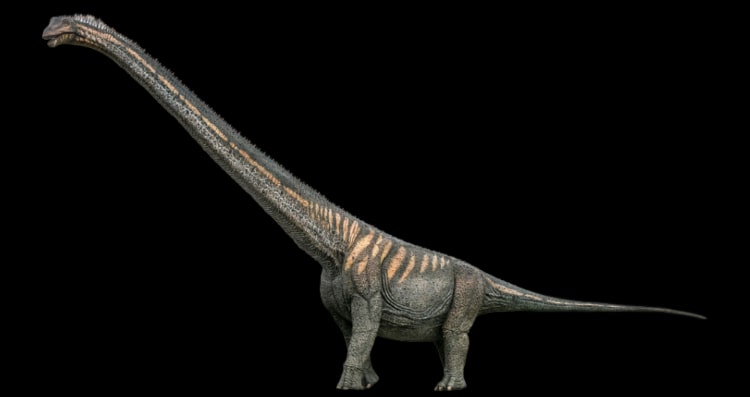
Sauroposeidon (which literally means “lizard earthquake god”) got its name due to its massive size. This herbivorous dinosaur had an extremely long neck that extended to about 60 feet in length, nearly the height of a six-story building! It served the purpose of reaching the leaves of tall trees for the dinosaur to feed on them.
Based on the footprints, it is estimated that the adult Acrocanthosaurus weighed nearly seven tons and was around 15 feet tall. On the other hand, the adult Sauroposeidon weighed 44 tons and was about 60 feet tall.
Since these dinosaur trails found in the riverbed remained underwater under normal weather conditions, they were not visible to the naked eye. Therefore, they remained a long-hidden secret until the drought caused the water bodies to dry up completely, leading to the discovery of these massive footprints.
How were the dinosaur footprints discovered in Texas preserved for so many years?
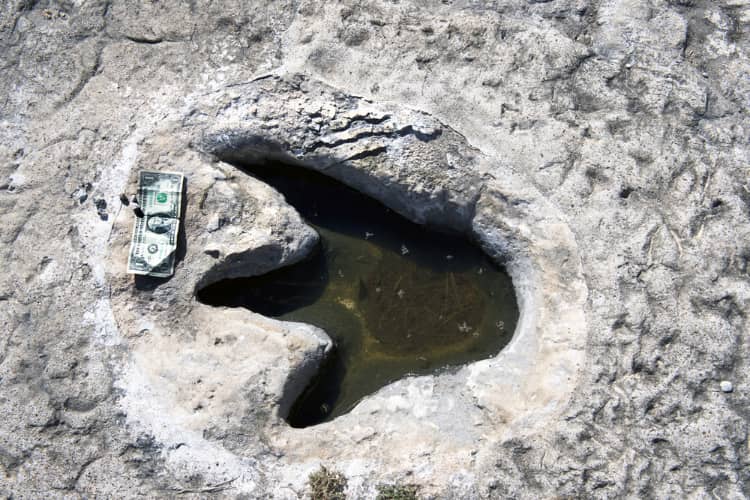
Stephanie Salinas Garcia, the spokesperson of the Texas Parks and Wildlife Department, said that the tracks were usually filled with sediment, which buried the footprints completely. The sediments consisted of calcium carbonate deposits from the shells of crustaceans that formed limey mud. This mud was neither too stiff nor too wet and helped to protect the tracks for so many years from weathering and erosion. When the water body completely dried up due to the harsh weather conditions, the trails became clearly visible.
The dinosaur trails would again not be visible once rains hit the Dinosaur Valley State Park and the Paluxy River starts flowing. The water would again bury the trail. However, now that the tracks have been discovered, the officials have resolved to protect these 113-million-year-old dinosaur footprints for future generations too. In order to protect the dinosaur tracks, officials have agreed to lay a new layer of sediment.














